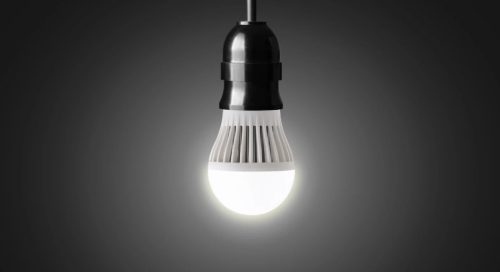Table of Contents
Businesses’ commercial spaces are having to look for sustainable solutions that offer both environmental and economic advantages. Retrofit lighting has become a great solution for organisations needing to modernise their facilities while also reducing their impact on the environment. Read on for 5 long-term benefits of putting in place retrofit lighting in a commercial space.
What is Retrofit Lighting?
Retrofit lighting is the process of upgrading existing lighting with more energy-efficient solutions without completely replacing all the current lighting fixtures and fittings.

It involves modifying or adapting older lighting fixtures to accommodate modern, energy-saving components while still retaining the original housing or basic framework of the lighting system.
The retrofit process usually has these key elements:
- Lamp Replacement: Traditional incandescent or fluorescent lamps are replaced with modern LED alternatives that provide better energy efficiency and light quality while also fitting into existing fixtures.
- Fixture Modifications: Existing fixtures may be adapted or modified to improve performance with new lighting technology. This could involve updating internal components or installing new mounting systems.
- Control System Modernisation: Modern retrofit light systems often include smart control systems including motion sensors, dimming and automated controls that can be added to the existing electrical infrastructure.
5 Benefits of Retrofit Lighting for Commercial Spaces
1. Energy Cost Reduction
The biggest long-term benefit of retrofitting lighting is the reduction it can deliver in energy consumption and the cost of energy. If you change to modern LED lights, they will usually consume up to 75% less electricity than traditional lighting systems and this can lead to substantial savings on energy bills.
This reduction in energy usage could mean that thousands of pounds can be saved every year, especially if you have a large commercial space that has extensive lighting systems. The value of savings over the years will often completely offset the initial installation costs which makes retrofit lighting a good financial investment.
2. Improve the Value of Your Property
Commercial properties that have energy-efficient modular lighting systems can often see an increase in market value. Retrofit lighting improvements make buildings more attractive to potential tenants and buyers who will recognise the long-term cost benefits and environmental advantages.
Modern and efficient lighting systems are becoming an important part of property valuations and buildings with an updated lighting infrastructure can often gain higher rental rates and benefit from shorter vacancy periods.
3. Using LEDs to Improve Efficiency
Modern LED fixtures can last up to 50,000 hours, and this means that they need to be replaced less often and have lower maintenance requirements. This extended lifespan, combined with better light quality and distribution, can also create a more comfortable and productive working environment.

Modern LED technology has superior colour rendering, and many lamps have a Colour Rendering Index (CRI) of 80 or higher. This improvement in light quality can be especially useful in retail environments where the appearance of a product is important or in office spaces where good lighting can affect productivity.
Modern retrofit solutions also have much better thermal management characteristics, and this can contribute to their long-term benefits. Unlike traditional lighting systems that convert a large amount of energy into heat, LED retrofit solutions operate at lower temperatures.
Their reduced heat output can decrease the pressure on air conditioning systems, which could lead to additional energy savings of 5-10% in cooling costs during the warmer months.
4. Environmental Compliance
Environmental regulations are becoming increasingly strict, so retrofitting lighting can help businesses stay ahead of compliance requirements while also keeping up with environmental awareness.
If your business reduces its energy consumption and carbon emissions, it can strengthen its sustainability credentials and appeal to environmentally aware stakeholders. This proactive approach to environmental awareness can improve the reputation of your brand and help businesses avoid mandatory upgrades in the future, which may cost a lot more money.
5. Access to Financial Incentives
Many governments and energy providers offer financial incentives for businesses that put in place energy-efficient modular lighting solutions. These incentives can include tax rebates, grants and other financial benefits that help offset the initial investment costs.
Furthermore, as sustainability becomes increasingly important in business operations, companies with efficient lighting systems may find themselves in a better position to access green financing options and environmental certifications.
If you’re thinking about installing retrofit lighting, it is important to make sure that the solutions you choose work with your current needs and any future business objectives.
Carefully planning and putting in place retrofit lighting solutions can create lasting benefits that contribute to both financial success and environmental sustainability. The initial outlay of retrofit lighting may seem significant, but the combination of energy savings, reduced maintenance costs and potential financial incentives can result in a positive return on investment within a few years.




